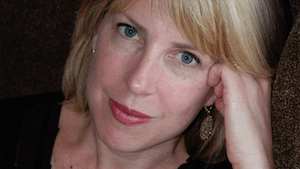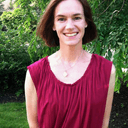Stay in the Loop
BSR publishes on a weekly schedule, with an email newsletter every Wednesday and Thursday morning. There’s no paywall, and subscribing is always free.
A new view
Christina Baker Kline's 'A Piece of the World'

At her February 28, 2017, Free Library of Philadelphia talk, author Christina Baker Kline said she immersed herself for two years in the history and social context of Andrew Wyeth’s famous 1948 painting Christina’s World. That immersion resulted in her recently published novel A Piece of the World and deepened what she already felt was a personal connection to the work.
“Over the years, I came to see this painting as a Rorschach test, a magic trick, a sleight of hand,” she told the audience.
Optical illusion
Baker Kline was intrigued by the mysterious qualities of Wyeth’s portrait, the ways it plays with viewers by tricking them into seeing a young girl relaxed in a field, only to realize upon closer inspection that she might actually be much older and quite frail.
Christina looks away from the viewer, poised almost tensely, gazing up at a derelict farmhouse. Baker Kline said A Piece of the World is an attempt to imagine the “story of what it would look like if she would turn her head.”
Baker Kline’s engrossing new novel follows on the heels of her successful Orphan Train, a New York Times bestseller for more than two years and Philadelphia’s 2015 “One Book, One Philadelphia” selection.
Through her eyes
Set in rural Maine, A Piece of the World brings Christina to life complete with a degenerative muscular disease, a distant mother and unempathetic father, and a life burdened with chores ranging from melting snow for water to making soap from lye. Burns from the farmhouse’s wood stove scar her thin arms.
Christina’s mind is equally marred by her failed love affair with a Harvard man whose family thinks she is beneath him. Only her grandmother understands and sympathizes with Christina—that is, until “Andy,” the young Wyeth, enters her ramshackle farmhouse and life each summer and begins to paint her world.
“What she wants most—what she truly yearns for—is what any of us want: to be seen,” Baker Kline writes at the novel’s conclusion. Andy does just this by capturing Christina’s artistic and intellectual soul in his enigmatic picture, bringing out the yearning and pain of the inner life that has been trapped so long in her disfigured body and unforgiving circumstances. The novel, like Wyeth’s painting, becomes a psychological portrait of its character.
Being seen
Baker Kline unveils Christina’s flaws, her chilliness and stubbornness, alongside her strengths, endurance, and fortitude—her ability to make the best of things. The dialogue feels authentic, as if the characters were actually in the room talking to the reader. Baker Kline gives them flesh and bone.
At times, however, the sense of Christina’s emotional and intellectual imprisonment in this farmhouse with an unyielding family and a degenerating body, her alienation from the world, feels a bit heavy-handed. The back-and-forth between her past and present becomes predictable.
But the sense that being seen is an essential ingredient of human interaction and fulfillment is a compelling theme running through the novel, tying its disparate parts and historical resonances all together.
What, When, Where
A Piece of the World. By Christina Baker Kline. William Morrow, 2017. 296 pages, hardcover; $27.99, available at amazon.com.
Sign up for our newsletter
All of the week's new articles, all in one place. Sign up for the free weekly BSR newsletters, and don't miss a conversation.

 Courtenay Harris Bond
Courtenay Harris Bond